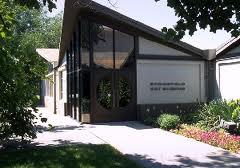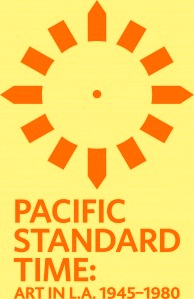Further on boundaries. This is another “small thing,” really, but it’s indicative of an entrenched problem at the New Museum: the lack of boundaries with the commercial world.
-thumb-175x175-20502.jpg) According to the New Museum’s website, an artist called Dzine is giving manicures and doing people’s nails in the museum’s store: it’s called “Getting Nailed at the New Museum.” And that’s not all. Here’s the description:
According to the New Museum’s website, an artist called Dzine is giving manicures and doing people’s nails in the museum’s store: it’s called “Getting Nailed at the New Museum.” And that’s not all. Here’s the description:
Continuing his investigation into Kustom Kulture and its relationship to art, sub cultures and self fashioning, Dzine will set up a mini-mobile nail salon in the New Museum Store lobby window, a project in collaboration with Salon94 and The Standard Hotel. Part sculpture, part performance, the nail salon will offer free nail designs to museum visitors on three consecutive Saturdays during the month of September. New York nail artists from different cultural backgrounds will be present to paint their unique style of designs on visitors’ fingers.
Due to the overwhelming response, we are fully booked for all nail sessions. We apologize for not being able to accommodate everyone.
Those are my boldface names — added for emphasis. Italics wouldn’t do in this case.
Plus, there’s this: in the New Museum’s store, Dzine is selling his “limited edition of 40 unique 24kt gold-plated Pinky Nails for the New Museum. They’re all a little funky, a little eccentric, and completely ghetto fabulous.”
Why not just rent out the museum to commercial ventures?
People complain all the time about the contemporary art world, saying it’s too much about the money and about being cool (and maybe even ghetto fabulous — where is Tom Wolfe when we need him?). This sure does not help.
After getting bad press when it allowed trustee Dakis Joannou to show his own collection, in a show curated by his artist-friend, Jeff Koons, the New Museum might have been a tad chastened, even careful. Guess not.
Photo Credit: Courtesy of Dzine/The New Museum

 The other day I ran across
The other day I ran across ![Thumbnail image for Photo_by_Kertis_Creative.[1].jpg](http://www.artsjournal.com/realcleararts/assets_c/2011/09/Photo_by_Kertis_Creative.[1]-thumb-480x319-20505.jpg) The story adds
The story adds Today, PST organizers announced that more than 70 private art galleries in Culver City, Santa Monica, West Hollywood and the Greater Los Angeles area will join in, staging more than 125 exhibitions. This truly looks to me to be what the press release actually says, an “unprecedented cultural collaboration.”
Today, PST organizers announced that more than 70 private art galleries in Culver City, Santa Monica, West Hollywood and the Greater Los Angeles area will join in, staging more than 125 exhibitions. This truly looks to me to be what the press release actually says, an “unprecedented cultural collaboration.”  The Next article does a good job of describing what you’ll see on the site:
The Next article does a good job of describing what you’ll see on the site: